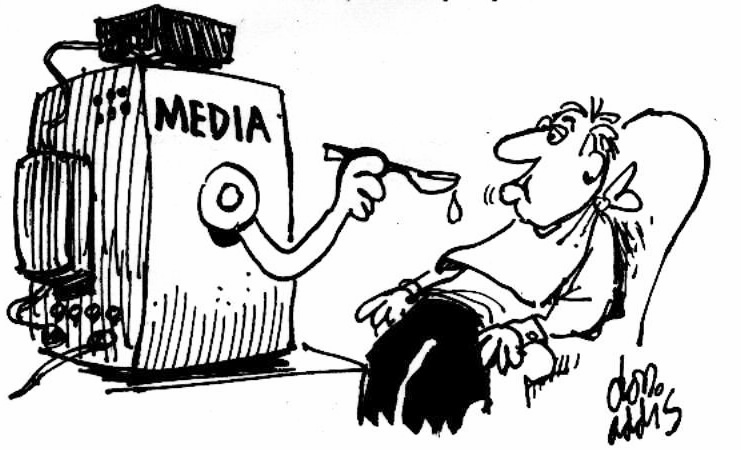Jaipur Literature Festival (JLF) was first held in 2006 and it is perhaps the one event that gave the most impetus for literary festivals to blossom in India. It provided a space for spirited debates and discussions on myriad literary topics and in turn generated more interest in such literary events.
However, over the years, JLF has been plagued by increasing controversies. Add to that, people who go there not for intellectual discussions, but to be seen and photographed. Similarly, the number of literary festivals that have come up throughout the country can at times fall short of their true purpose, becoming only events for a great photo op.
Of course, that is not always the case. They still continue to be platforms where people can interact with many authors, writers, and speakers. Even the authors themselves get an audience to introduce their work to . Literary festivals can also introduce readers to new ideas and books to read. Thus, like any other aspect of our lives, literary festivals also have their pros and cons.
Now that the JLF 2020 is over, I wondered what kind of a festival I would want to concoct and here is the recipe for my perfect literary festival.
Book Releases
Having authors release their book and talk about it is a good practice that exposes readers to newer writers and their work. For example, in Tata Lit Live! I discovered Rehana Munir’s novel, Paper Moon which is about the protagonist, Fiza, opening a bookshop in Bandra in Mumbai.
Literary Quizzes and Games
Literature does not necessary have to be about only private reading. Festivals do not always have to be about discussions and ideas. Perhaps, they can be spiced up by having some fun games such as quizzes or Pictionary revolving around literary themes. This also leads to better engagement with the audience.
Author Signing
Lining up to get your copies signed is the best thing about literary fests. It is not easy to meet authors in this country. They can be overshadowed by the media and their publication houses, making them inaccessible to their readers. And if your favourite author happens to be an international one, good luck ever getting a chance to meet them! Having author signing is a great way for readers to interact with them and to be proud owners of signed books. It is any book lovers’ dream!
Having it in smaller towns
This is more to do with looking at the larger picture since organising a festival in smaller towns helps them be put on the tourist map as well. Jaipur attracts major tourists throughout the year and the literary festival has added another feather in the Pink City’s tourist cap. Smaller towns can get a different exposure through these festivals, wooing readers and book lovers to visit the town and its attractions.
Enchanting locales
Associated with this is the location of the festival. If one is to have it in a small town, one can pick a touristy place for it. Diggi Palace in Jaipur is one example. The recently concluded Kerala Literary Festival 2020 also took place in Kozhikode, on the beautiful Calicut beach. Khushwant Singh Litfest’s location is the scenic Kasauli. These events have the potential to boost tourism, hopefully in an environmentally sustainable manner.
Musical and Dance festivals organised in the country often cash on this idea such as the Elephanta Festival in Mumbai that uses the ancient sculptures as backdrop for mesmerising performances.
Boosting Local Authors
In connection to the above points, smaller literary festivals help local artists and writers to showcase their work and give them much needed exposure too. It is always a delight to appreciate local and regional writers. The Arunachal Literature and Art Festival is one commendable example.
Out With Pretention!
However, what should be done away with in any literary festival are unnecessary crowds and pretentiousness. Everyone in India would appreciate a sparsely crowded event that offers a space to breathe and relax. Literary festivals really need to have better crowd control. Smaller, lesser known literary festivals such as ones in Kasauli or Arunachal have fewer people turning up anyhow but definitely bigger names particularly JLF attracts huge crowds. People come from all over the country to attend the fest.
Ticketing the festivals could perhaps be one such solution but one that might be opposed as well since these are some of the few places left in India that do not charge to be there.
One of my major critiques of literary festival’s attendees is that they might not be there out of any genuine love for the topics or ideas. They might be pretentious attendees. They can be found anywhere, in all events actually because our world has become increasingly shaped by online presence. It becomes a norm to “check in” to places both offline and online and to show it off.
I might sound quite a prude in saying this but for me, a screening test or tool that could detect only the photo takers would make it an ideal literary festival.
Regional Languages and Poetry
The recent anti CAA protests saw protestors expressing their dissent through the use of poetry and in North India, the poetry used were in regional languages. It is the true mark of poetry when people use it as a form of questioning and speaking out against injustice. Literary festivals most often focus on English writing and the prose form. They could have sections devoted to regional writing such as Bengaluru Literary Festival 2019 having engaging discussion on the state of contemporary Hindi Writing, discussing the role of women in Odia and Bengali literature or about Kannada Literature.
Poetry slams would be another ideal way to encourage interest in poetry and audience participation.

















 Health management has been made easier with apps like
Health management has been made easier with apps like
























